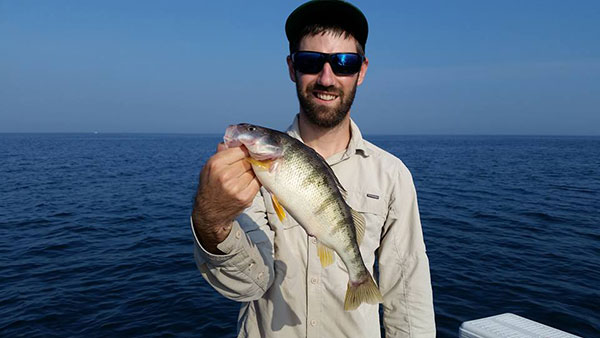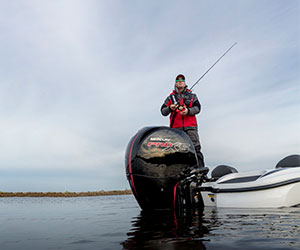
What's New?

Rain didn’t dampen the spirits of 14 Casting Couples contestants in the season finale at Magician Lake last weekend.

Man, you talk about a close finish! It doesn’t get much closer than what the Arjay’s Classic experienced at Paw Paw Lake on Saturday.

New Gear
The ClapTail™ 110 is a topwater bait with a metal prop and back blade that collide when retrieved, producing a unique two-tone fish-attracting sound.
Newsflash
DNR Suspects Bird Flu Causes Recent Waterfowl Die-offs in Southern Michigan
- Details
MDNR Report
The Michigan DNR has recently sampled dead wild birds suspected to be positive for highly pathogenic avian influenza at multiple locations across Lower Michigan. The DNR’s ongoing disease surveillance indicates that HPAI is widespread in wild bird populations throughout the state.
HPAI is a highly contagious respiratory disease that causes sickness and sometimes death in birds and mammals. The virus spreads through fecal droppings or nasal discharge of an infected bird, which contaminates the environment.
So far this year, more than 300 dead wild birds have been discovered in five counties.
DNR staffers collected 77 dead Canada geese and one dead mallard from the Fennville Farm Unit at Allegan State Game Area in Allegan County. More than 80 dead Canada geese were reported along the Shiawassee River near Owosso in Shiawassee County. About 25 dead Canada geese were reported at Williamston Lakes in Ingham County, and another 20 dead birds were reported along the Grand River in Grand Ledge in Eaton County. About 100 dead birds were reported in Washtenaw County.
Samples collected from the Allegan State Game Area, Shiawassee River, Williamston Lakes and Washtenaw County sites were sent to the Michigan State University Veterinary Diagnostics Laboratory in East Lansing for testing. Preliminary results indicate avian influenza is suspected.
Biologist Reveals Eye-popping Numbers in Lake Michigan Perch Studies
- Details
By Louie Stout

We may be in dead of winter, but the impact of the weather over the next two months could have an impact on Lake Michigan perch fishery.
How so? Well, the past few winters were much milder and opened the door for remarkable perch fishing successes, especially in northwest Indiana waters.
Consider this – the Indiana DNR estimates some 70,000 perch were harvested in Hoosier waters last year– three times the 10 year average! Creel statistics show that 55 percent of those were taken in February and 35 percent in March. The remaining 10 percent were caught the rest of the year, with the bulk coming in July.
Milder weather in those early months enabled western Indiana anglers to get after a vulnerable adult perch population that groups up prior to the spawn.
Many of the perch caught there last year averaged a whopping 12 inches and are pre-spawn fish staging in deep clay flats in 50 to 60 feet of water.
Meanwhile, summertime anglers struggled, but Indiana Biologist Ben Dickinson believes that was largely due to weather patterns that pushed cold water farther offshore and away from traditional perch anglers.
The quality catches in late winter don’t seem to compute with DNR surveys that show spawn successes the last 10 or so years haven’t been very good.
“There was a great year class in 2015 and there have been a few blips here and there, but overall, not very good,” Dickinson said.
Page 9 of 267













Connect With Us